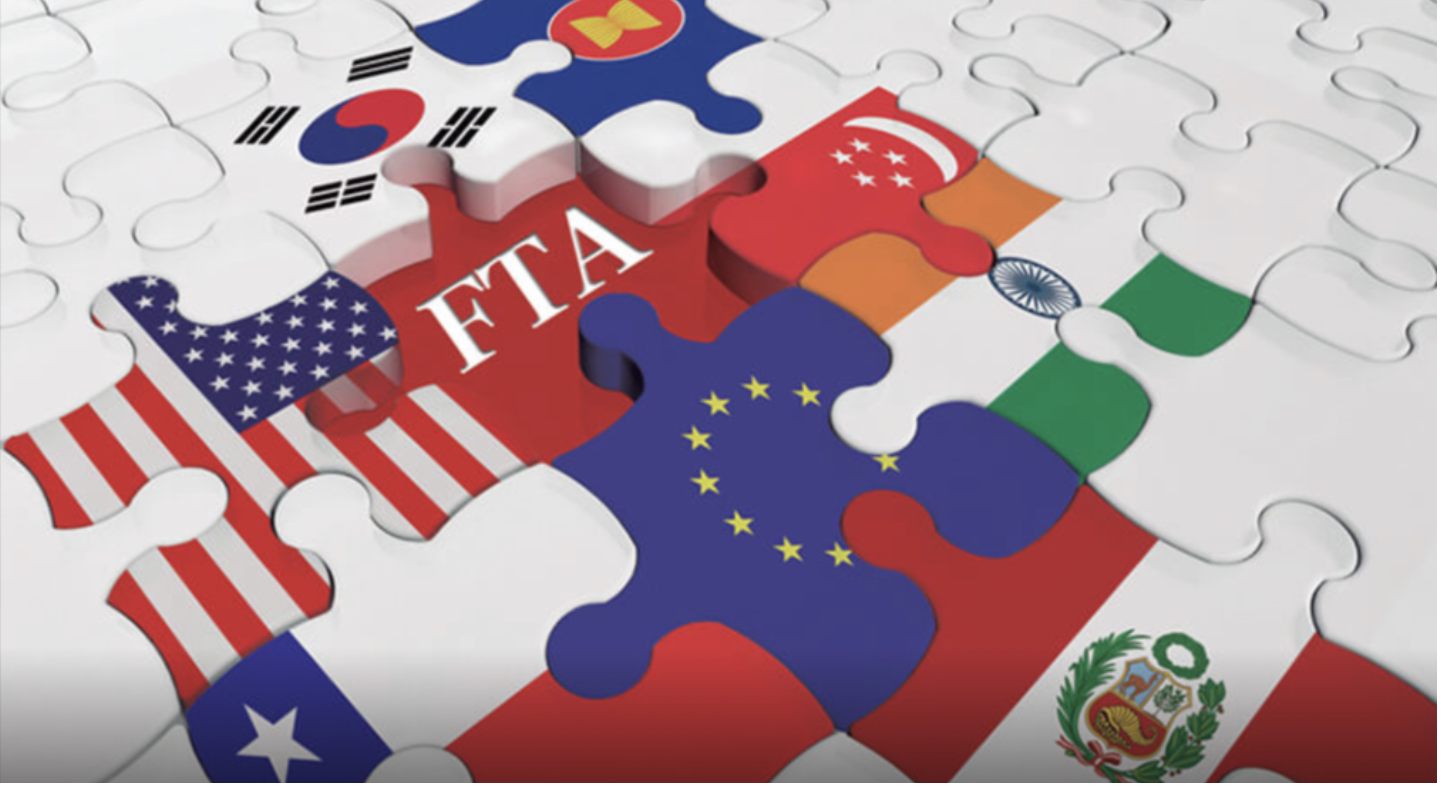A Free Trade Agreement is a pact between two or more nations aimed at reducing barriers to imports and exports among them. An FTA is an agreement between two or more countries where the countries agree on certain obligations that affect trade in goods and services, and protections for investors and intellectual property rights, among other topics.
Free Trade Agreements also help a company enter and compete more easily in the global marketplace through zero or reduced tariffs and other provisions. While the specifications of the FTA may vary, taking into consideration a very broad sense of an FTA helps us understand that they generally provide for the reduction of trade barriers and the creation of a more predictable and transparent trading and investment environment. This makes it easier and cheaper for Indian companies to export their products and services to trading partner markets.
How does a Free Trade Agreement work?
A Free Trade Agreement is often implemented in form of a formal and mutual agreement between the nations involved. However, a free-trade policy may simply be the absence of any trade restrictions.
The government's party to an FTA or free trade policies do not necessarily abandon all control of imports and exports or eliminate all protectionist policies. In modern international trade, few free trade agreements (FTAs) result in completely free trade.
Free trade on the international level is no different from trade between neighbours, towns, or states. It allows businesses in each country to focus on producing and selling the goods that best use their resources while other businesses import goods that are scarce or unavailable domestically.
India and Free Trade Agreements
After India opted out of the Regional Comprehensive Economic Partnership (RCEP) in November 2019 the 15-member FTA grouping that includes Japan, China and Australia, FTAs went into cold storage for India.
Later in May 2021, came the announcement that India-European talks, which had stalled in 2013, would be resumed. Both sides are now engaged in internal preparations to take these various strands of work forward.
Bilateral free trade agreements of India are being negotiated with the United Arab Emirates, the United Kingdom, Australia and Canada. The agreement with the UAE was close to finalisation’ while the FTA with Australia was at a ‘very advanced stage.
Issues in India's Foreign Trade Policy
Of many pertinent issues, two problems in India's Foreign Trade Policy stand out:
Low share of the manufacturing sector: The contribution of the manufacturing sector to India's GDP is less when compared to certain advanced and developed nations such as Germany, the USA, South Korea and Japan. The share of the manufacturing sector is comparatively less while taking into comparison countries like China, Türkiye and Indonesia.
Unfavourable FTAs: In the past decade, India signed FTAs with the Association of Southeast Asian Nations, the Republic of Korea, Japan, and Malaysia. However, it is largely believed that India’s trade partners have gained more from these agreements than India.
Way Forward
Considering that India is not a part of any mega trade deals, FTAs with countries would be an important part of a positive trade policy agenda.
India’s trade policy framework must be supported by economic reforms that result in an open, competitive, and technologically innovative Indian economy.
There is a need for us to focus on integrating our economy with the global economy that allow individuals and families to achieve financial security and pursue opportunities for betterment.
